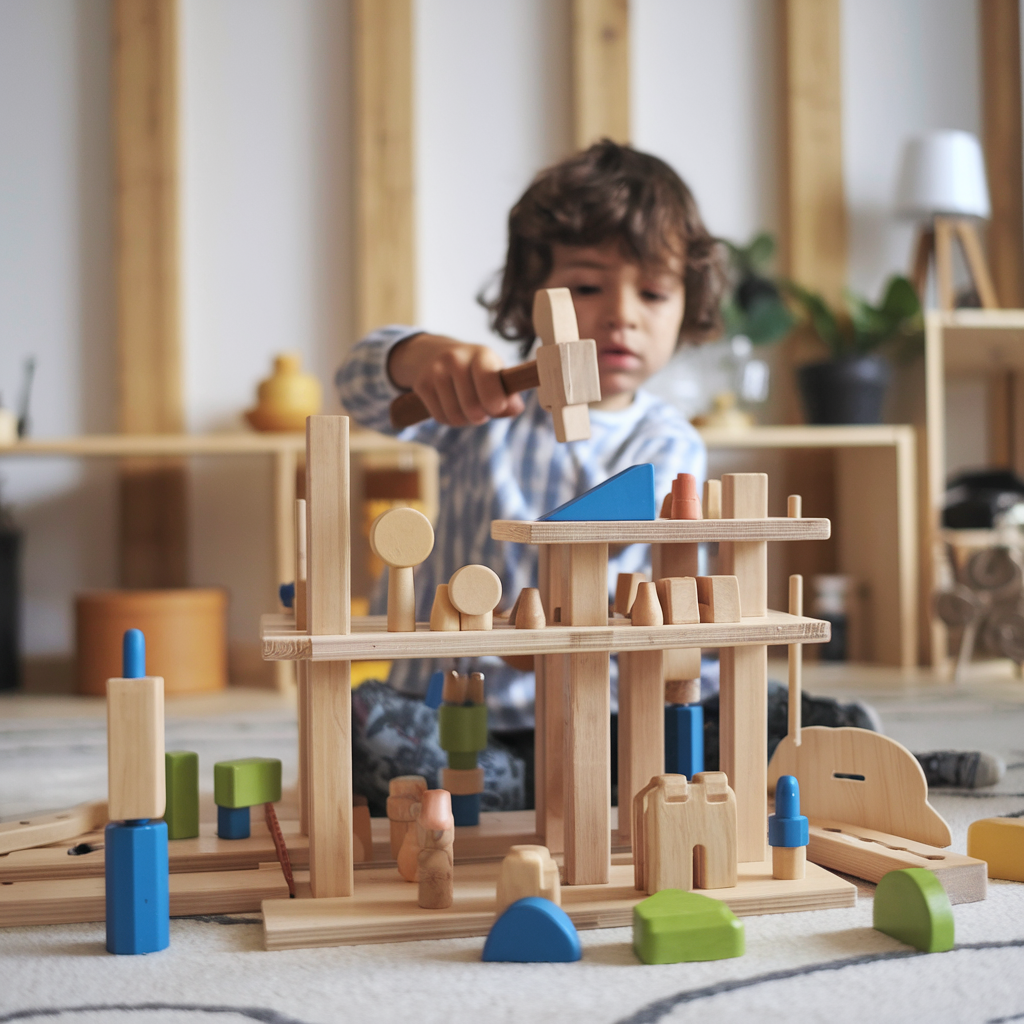Making your own wooden toys at home can be a fun and educational activity for both children and adults. By using recycled materials and reclaimed wood, you not only create unique toys but also contribute to sustainability by preventing waste. In this article, we’ll explore how to create wooden toys using recycled materials in a simple, practical, and eco-friendly way.

1. Choosing Recycled Materials
The first step in making wooden toys with recycled materials is selecting the right materials. You can use leftover wood from other projects, pieces of old furniture, or even discarded pallets. Besides wood, it’s a great idea to incorporate other recycled materials, such as bottle caps, toilet paper rolls, and old fabric scraps.
Helpful Tip:
- When using recycled materials like reclaimed wood, make sure it’s clean and free of splinters to ensure the child’s safety during play.
Read more: Wooden Toys and environmental sustainability
2. Tools Needed
To work with wood and other recycled materials, you’ll need some basic tools like a saw, sandpaper, a hammer, nails, or wood glue. Depending on the complexity of the toy you’re making, tools like a drill might come in handy. However, simplicity is key, and many toys can be made with just the basics.
Essential tools:
- A saw and sandpaper to shape and smooth the edges of the wood.
- A hammer, nails, and glue to join pieces made
3. Ideas for Simple Toys
There are many types of simple wooden toys you can make at home using recycled materials. Here are a few ideas:
- Building blocks: Use wood scraps of different shapes and sizes. Sand them well to make them smooth and safe for kids.
- Wooden cars: A wooden block for the body and bottle caps as wheels make easy-to-roll cars.
- Wooden animals: Draw and cut simple animal shapes from wood pieces. Paint them to add character.
- Puzzles: Create a simple puzzle by drawing shapes on a wooden board and cutting the pieces.
Creative fun:
- These toys are easy to make and can be personalized, adding a unique touch to every creation using recycled materials.
4. Eco-Friendly Painting and Finishing
One of the most fun parts of making your own wooden toys is painting them. Choose water-based paints, which are less toxic and safer for kids. If you prefer a natural finish, you can use vegetable oils like linseed oil to protect the wood, ensuring it stays safe and durable.
Sustainable choice:
- Using eco-friendly paints and finishes aligns with the goal of creating toys with recycled materials, emphasizing sustainability.
5. Benefits of Making Your Own Toys
Making wooden toys at home with recycled materials offers many benefits. Aside from being an eco-friendly and cost-effective activity, it also fosters creativity and manual skills in children, who can participate in the process. These handmade toys become special because they are made with care and attention, often carrying more meaning than store-bought toys.
Key benefits:
- Encourages the development of motor skills and creativity.
- Strengthens the bond between parents and children during toy-making activities.
Conclusion
Beyond encouraging the reuse of materials, this practice teaches valuable lessons about sustainability and the importance of manual work. Involving children in the process helps them develop practical skills while also fostering memorable bonding experiences.
These homemade toys, in addition to being eco-friendly, become unique and full of stories. Rather than just buying a toy, you and your family can create one together, turning the process into an educational and conscious activity using recycled materials.
